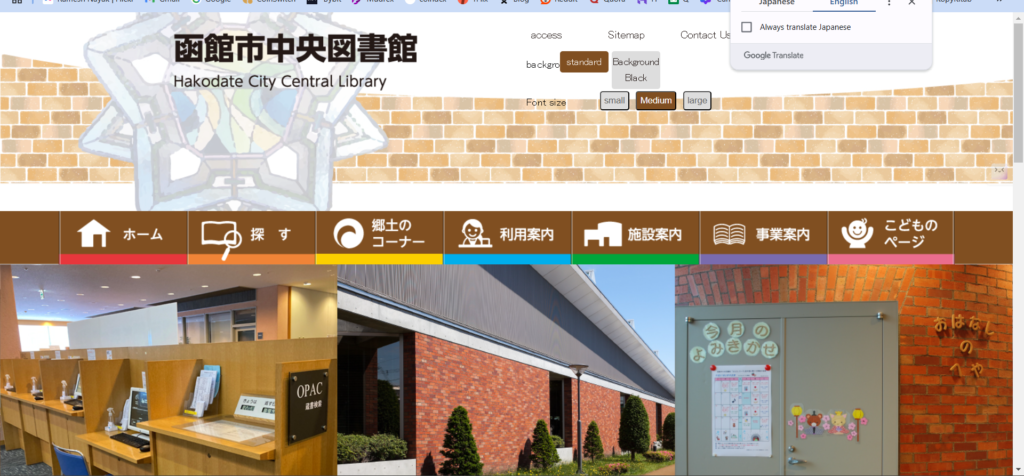National Diet Library (NDL), or Kokuritsu Kokkai Toshokan, is Japan’s national library, established with the purpose of supporting the legislative process and serving as a public repository for national knowledge. It is an essential institution for Japanese research, policy-making, and public access to information. Along with its Kansai-kan branch and the International Library of Children’s Literature (ILCL), the NDL plays a vital role in preserving the cultural heritage of Japan and making it accessible to the public, researchers, and policymakers alike.
This blog will provide a detailed overview of the National Diet Library, its Kansai-kan branch, and the International Library of Children’s Literature, exploring their history, services, and cultural significance.

History and Establishment of the National Diet Library
The origins of the National Diet Library can be traced back to the early 20th century when Japan recognized the need for a national library to support its legislative activities. The idea for a centralized library was discussed by the government as early as the Meiji era, but it was not until the post-World War II period that the library was formally established. The National Diet Library Act, enacted in 1948, officially created the library with the goal of supporting the legislative functions of Japan’s Diet, which consists of the House of Representatives and the House of Councillors.
The library‘s primary role is to provide legislators with access to resources and information to aid in their decision-making process. It serves as a repository of government publications, legal materials, and historical documents. However, the library’s scope extends far beyond legislative use, offering public access to a wide range of materials, including books, periodicals, and multimedia resources.
Main Building in Tokyo
The main building of the National Diet Library is located in the Chiyoda ward of Tokyo, adjacent to the National Diet Building. This modernist structure, designed by architect Kenzo Tange, was completed in 1961. The design of the building reflects the library’s dual mission of being a repository of information and a symbol of Japan’s democratic institutions.
The main building houses millions of books, magazines, and government publications. It also offers various research services to the public, including access to digital collections, archives, and specialized reading rooms. The library is open to the public but offers special privileges to Diet members, government officials, and researchers.
Kansai-kan Branch
In 2002, the National Diet Library expanded its services with the establishment of the Kansai-kan branch in Kyoto. The Kansai-kan was created to alleviate the pressure on the main building in Tokyo and provide better access to research materials for residents of western Japan. The Kansai-kan is designed to complement the main library by housing additional collections and specialized resources. It is located in the Sakyo ward of Kyoto, an area renowned for its historical and cultural significance.
The Kansai-kan building, designed by architect Tadao Ando, is an example of minimalist modern architecture. The building is a striking blend of concrete, glass, and natural elements, and it integrates harmoniously into the surrounding environment. The Kansai-kan is equipped with extensive collections in various fields, including law, economics, and the humanities, and serves as a regional hub for researchers and scholars.
The Kansai-kan offers a range of services, including access to its large collection of books and periodicals, digital resources, and archival materials. The branch also plays a significant role in promoting the library’s outreach programs, including events, lectures, and educational initiatives for the public.
International Library of Children’s Literature
The International Library of Children’s Literature (Kokusai Kodomo Toshokan) is a unique branch of the National Diet Library, dedicated to preserving and promoting children’s literature from around the world. Located in Ueno Park, Tokyo, the ILCL was opened in 2000 and serves as both a cultural institution and a research center for those interested in the field of children’s literature.
The ILCL houses an extensive collection of over 3 million books, periodicals, and other materials related to children’s literature, including works in multiple languages. Its mission is to foster an appreciation for children’s literature and to provide researchers, educators, and parents with resources to support their work. The library also organizes various events and exhibitions, offering children and families the opportunity to engage with stories and characters from across the globe.
In addition to its rich collection of books, the ILCL also offers a range of services, including a reading room for children, special exhibitions, and an online catalog for remote access to materials. It is a place of learning and exploration, promoting literacy, creativity, and cultural exchange.
Key Features and Services of the National Diet Library
The National Diet Library offers a wide range of services for both researchers and the general public. Key features include:
- Catalog and Digital Resources: The NDL maintains a comprehensive online catalog, accessible to users worldwide. It provides access to millions of bibliographic records, including books, articles, and government publications. Digital materials, such as historical documents and multimedia resources, are also available for remote access.
- Research Services: The NDL offers a range of research services, including reference assistance, interlibrary loans, and access to specialized databases. Researchers can access a wealth of information across various disciplines, including law, economics, history, and political science.
- Public Access: While the NDL’s primary mission is to support the Diet and government institutions, it is also open to the public. Visitors can explore the vast collections, attend events and exhibitions, and make use of the library’s reading rooms.
- Special Collections and Archives: The library houses a number of special collections and archives, including materials related to Japan’s legislative history, political documents, and rare books. These collections are invaluable for researchers studying the history of Japan and its political system.
- Exhibitions and Cultural Programs: The NDL regularly organizes exhibitions and cultural programs to showcase its collections and promote knowledge of Japan’s history and culture. These events are open to the public and are often tied to significant national or international events.
The NDL's Global Role
While the National Diet Library primarily serves the legislative needs of Japan, it also plays a global role in the preservation and dissemination of information. The NDL collaborates with other national libraries and international organizations to ensure the exchange of knowledge across borders. It participates in initiatives such as the International Federation of Library Associations and Institutions (IFLA), UNESCO’s Memory of the World program, and the International Standard Book Number (ISBN) system.
The NDL is also involved in digitization projects that make Japanese historical documents and materials accessible to a global audience. By expanding its digital collections, the library enhances its role as a repository of world knowledge and fosters international cooperation in the field of information preservation.
Educational and Community Outreach
The National Diet Library also focuses on education and community engagement. It offers a variety of programs and services designed to help the public understand the importance of libraries and information access. These programs include lectures, workshops, and outreach initiatives targeted at different age groups and communities.
The library’s commitment to literacy is especially evident in the work of the International Library of Children’s Literature. By fostering a love for reading among children and families, the ILCL helps to cultivate a more informed and educated society. Additionally, the library’s commitment to the preservation of children’s literature from around the world promotes cultural understanding and awareness.
The National Diet Library and its branches, including the Kansai-kan and the International Library of Children’s Literature, are invaluable institutions that contribute to the intellectual and cultural fabric of Japan. Through their extensive collections, research services, and educational programs, these libraries provide essential resources for lawmakers, scholars, students, and the general public. Their role in preserving knowledge and promoting access to information is vital in today’s interconnected world, and their global outreach ensures that the rich cultural heritage of Japan is shared and appreciated by people around the world.
As a symbol of Japan’s commitment to knowledge, democracy, and cultural exchange, the National Diet Library continues to serve as a beacon of learning and information for the 21st century. Whether through its research services, special collections, or community outreach, the NDL is an indispensable part of Japan’s intellectual landscape.






